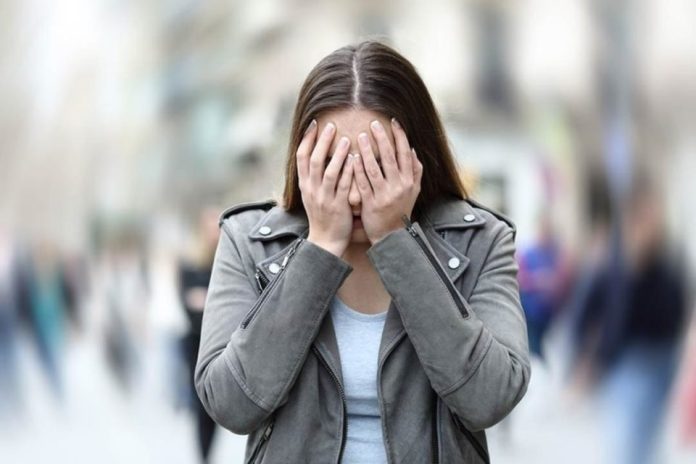Social anxiety is a complex and often debilitating mental health condition that affects millions of individuals worldwide. Characterized by an overwhelming fear of social interactions and the persistent worry of being judged or scrutinized, social anxiety can significantly impact various aspects of a person’s life. In this comprehensive article, we delve into the intricacies of social anxiety, exploring its definition, symptoms, causes, the impact on daily life, and effective strategies for managing and overcoming this pervasive challenge.
Understanding Social Anxiety
- Defining Social Anxiety:
- Social anxiety, also known as social anxiety disorder (SAD), is a chronic mental health condition characterized by an intense fear of social situations.
- Individuals with social anxiety often experience heightened self-consciousness, fear of negative evaluation, and a strong desire to avoid social interactions.
- Key Features:
- Fear of Negative Evaluation: The central feature is an excessive fear of being judged, criticized, or embarrassed by others.
- Avoidance Behaviors: Individuals may go to great lengths to avoid social situations or endure them with extreme discomfort.
Symptoms of Social Anxiety
- Physical Symptoms:
- Blushing: Uncontrollable reddening of the face.
- Sweating: Profuse sweating, especially in the palms.
- Trembling: Shaking or trembling of the hands or voice.
- Cognitive Symptoms:
- Excessive Worry: Persistent and irrational worry about upcoming social events.
- Negative Self-Talk: Engaging in self-critical thoughts and anticipating social failure.
- Behavioral Symptoms:
- Avoidance: Steering clear of social situations or events to prevent anxiety.
- Limited Eye Contact: Difficulty maintaining eye contact with others.
- Physical Discomfort: Restlessness, fidgeting, or freezing in social situations.
Causes of Social Anxiety
- Biological Factors:
- Genetics: A family history of anxiety disorders may increase susceptibility to social anxiety.
- Neurotransmitter Imbalances: Irregularities in neurotransmitters, particularly serotonin, can contribute to heightened anxiety.
- Environmental Factors:
- Negative Experiences: Traumatic or humiliating social experiences, such as bullying, can contribute to the development of social anxiety.
- Parental Modeling: Growing up with parents who exhibit social anxiety behaviors may influence its development.
- Social Learning:
- Observational Learning: Witnessing others experiencing social anxiety or being overly criticized in social situations can contribute to the adoption of similar behaviors.
Impact on Daily Life
- Interpersonal Relationships:
- Difficulty Forming Connections: Social anxiety can hinder the ability to initiate and maintain relationships.
- Limited Social Support: Individuals may struggle to seek and receive support from others.
- Educational and Professional Implications:
- Academic Performance: Fear of participation in class or group activities may impact academic achievement.
- Career Advancement: Avoidance of networking or public speaking opportunities can hinder professional growth.
- Mental Health Consequences:
- Isolation: Social anxiety may contribute to feelings of isolation and loneliness.
- Co-occurring Disorders: Social anxiety often coexists with other mental health conditions, such as depression or generalized anxiety disorder.
Effective Strategies for Managing Social Anxiety
- Cognitive-Behavioral Therapy (CBT):
- Exposure Therapy: Gradual exposure to feared social situations to reduce anxiety over time.
- Cognitive Restructuring: Identifying and challenging negative thought patterns associated with social anxiety.
- Mindfulness and Relaxation Techniques:
- Deep Breathing: Controlled, deep breathing to alleviate physical symptoms of anxiety.
- Mindfulness Meditation: Cultivating present-moment awareness to manage intrusive thoughts and promote relaxation.
- Social Skills Training:
- Role-Playing: Practicing social interactions in a safe environment to build confidence.
- Communication Skills: Learning effective communication strategies to navigate social situations.
- Medication:
- Selective Serotonin Reuptake Inhibitors (SSRIs): Antidepressant medications can be prescribed to alleviate symptoms of social anxiety.
- Benzodiazepines: Short-term use of anti-anxiety medications for acute situations.
- Support Groups:
- Shared Experiences: Participating in support groups with individuals facing similar challenges can reduce feelings of isolation.
- Peer Support: Encouragement and understanding from peers who have overcome social anxiety can be empowering.
- Gradual Exposure and Goal Setting:
- Step-by-Step Approach: Gradually exposing oneself to increasingly challenging social situations.
- Setting Achievable Goals: Breaking down larger social goals into smaller, achievable steps.
- Professional Guidance:
- Therapeutic Relationship: Building a trusting relationship with a mental health professional to explore and address social anxiety.
- Treatment Planning: Collaboratively developing a personalized treatment plan to address specific needs and goals.
Conclusion
Social anxiety is a nuanced and pervasive mental health challenge that requires understanding, compassion, and effective strategies for management and recovery. By recognizing the symptoms, understanding the underlying causes, and employing evidence-based interventions, individuals with social anxiety can embark on a journey towards healing. With a combination of therapeutic support, self-help techniques, and a supportive social network, it is possible to unravel the layers of social anxiety and pave the way for a life marked by confidence, connection, and fulfillment.







